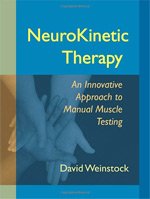Are you moving functionally?
In my last article, Getting to the Root of Pain and Illness, I introduced Neurokinetic Therapy (NKT) as an option for treating musculoskeletal pain. I would like to focus a little more attention to this method, so that my clients can develop a deeper understanding of how their bodies work and how we can use NKT to increase function and decrease pain.
Do you have a pain that is always there no matter how much you use a foam roller or seek out other therapies? Do you get temporary relief, but the pain always returns? If you have pain that is a result of damage to your body, NKT may not be able to offer much relief. However, if you have a chronically tight muscle that feels like a toothache, a chronic muscle weakness that prevents you from moving normally, or any annoying aches and pains, NKT may be just the thing for you.
In NKT, we assess movement patterns. We consider where the person has pain, what the tissue feels like, and what muscles may be involved. We do a series of muscle tests to determine which muscles are facilitated (testing strong) and which are inhibited (testing weak). It is important to note that facilitated could mean that the muscle is functioning normally, or that it is too tight and is the prime mover in a compensation pattern. On the flip side, if a muscle tests inhibited, it doesn’t mean that it is inherently weak; it may just be switched off by a facilitated muscle. The layers of compensation can get very complicated, but the magic of NKT is that layer by layer, we can reestablish healthy, functional movement patterns.
The bottom line is that when your body uses dysfunctional movement patterns to move, pain develops. When your body uses functional movement patterns to move, pain goes away.
How do dysfunctional movement patterns develop, and how do we fix them?
All movement patterns are stored in the brain, specifically in the motor control center that is part of the cerebellum. The motor control center is directed by the cerebrum and the limbic system to create movement patterns. The cerebrum controls all voluntary actions of the body and the limbic system is the emotional center of the brain, which creates an interesting link between strong emotions, stress, shock and trauma, and movement patterns. When you’re under stress, do you hold your breath or clench your jaw? This could be the start of a dysfunctional movement pattern. Due to the plasticity of the brain, dysfunctional movement patterns are as easy to create as functional movement patterns.
When the body is injured or stressed, whether physically or emotionally, healthy movement may become difficult. Without us even noticing, the brain recruits other muscles to do the work of whichever muscle is injured or fatigued. After the compensation pattern is repeated, it becomes ingrained in the motor control center. This is how dysfunctional movement patterns are established.
For example, if you are doing bicep curls, and you decide to use a heavier weight and do more reps than you usually do, your biceps will fatigue and weaken. If you continue to work through the muscle fatigue, your brain will begin to recruit other muscles of the shoulder and forearm to make the movement happen, without much help from the biceps. If you continue to do this, your biceps will become inhibited and won’t fire properly during normal use and you will most likely develop pain somewhere in your body, due to the compensation pattern that was created.
In this example, we can see that the motor control center learns through failure. If the bicep is weakened, the body learns how to recruit other muscles to achieve the desired end result.
In NKT we use this concept to our advantage. We do manual muscle tests that isolate the function of the muscles being tested. If the muscle test is failed, i.e. the muscle is inhibited and doesn’t fire, the motor control center becomes open to learning a new pattern or to reestablishing a functional pattern. This is our window to find the dysfunctional movement pattern, release it, and assign a specific exercise to burn the functional movement pattern into the brain. Often the exercise is just a repeat of the muscle test without the resistance. In the bicep example above, the bicep curl could be repeated without weight or with very light weight, simply to fire the bicep.
Next time you are in the clinic, ask if NKT may be the best approach to help with your chronic aches and pains.

